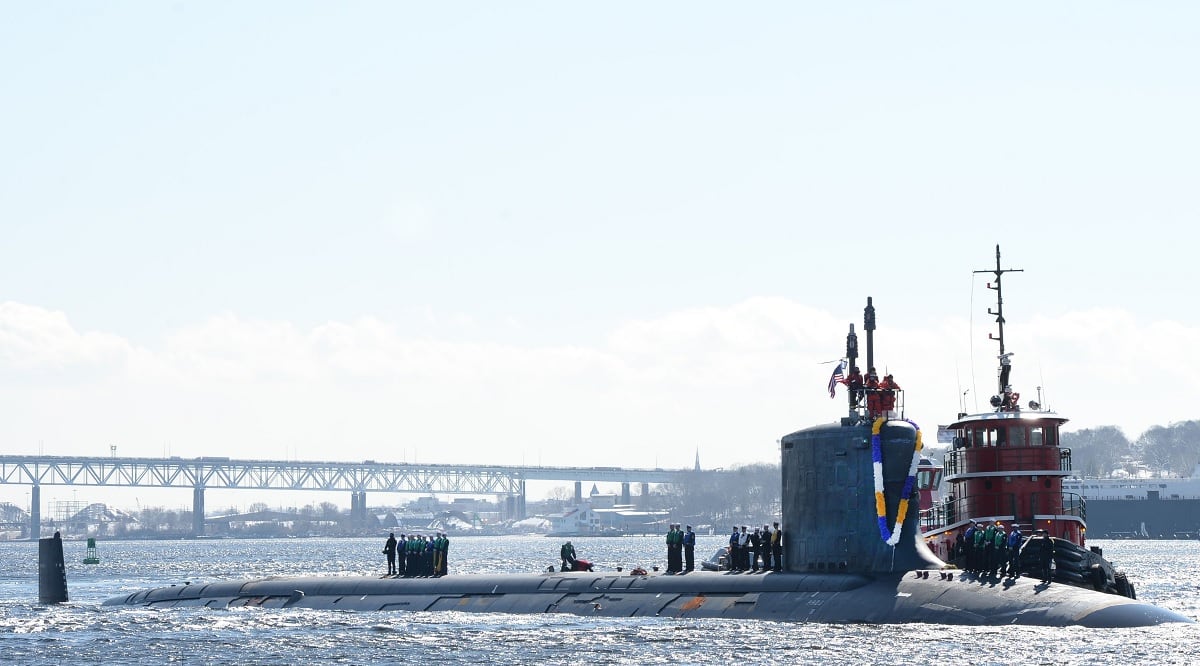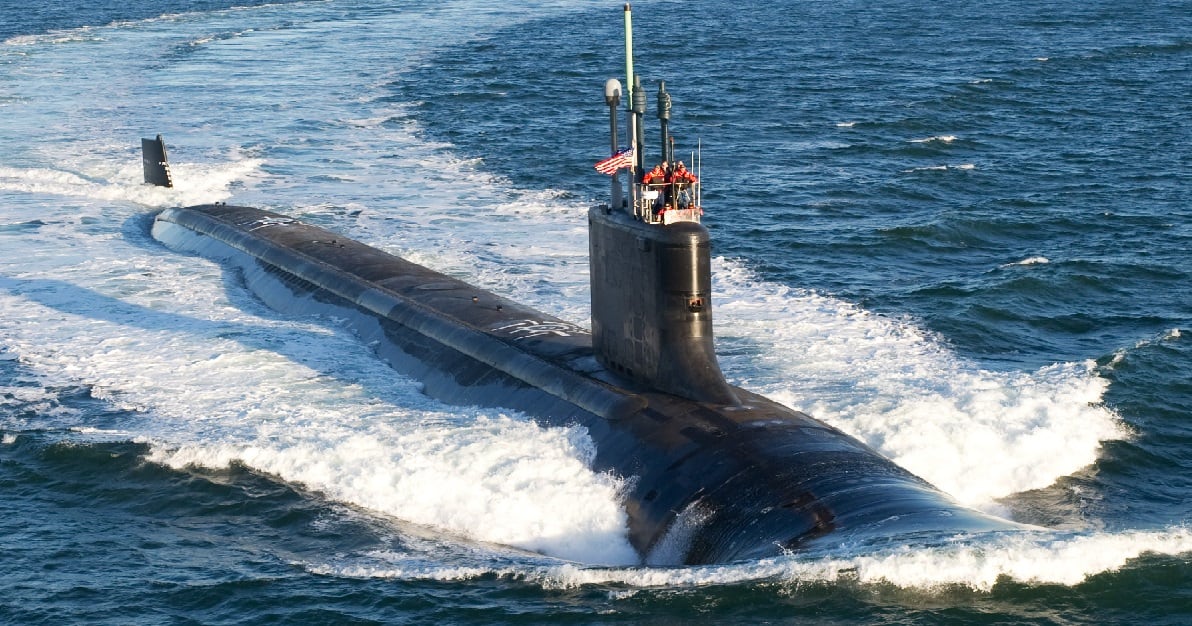WASHINGTON ― The Pentagon is asking Congress for authority to buy two of its new Columbia-class ballistic missile submarines, a potential mega-deal worth as much as $17.7 billion with far-reaching implications for the ailing submarine industrial base.
If approved, the proposal would potentially lower the price by promising General Dynamics a steady stream of work at its shipyard as the Pentagon and its network of suppliers grapple with COVID-19’s economic shocks. General Dynamics and the Navy have been negotiating the terms of a two-ship purchase, but nothing can be finalized until Congress authorizes the block buy.
As the House and Senate Armed Services committees ready their drafts of the 2021 National Defense Authorization Act, it’s customary for the Defense Department to send legislative proposals for the annual policy bill. It was unclear how Congress will ultimately react to this one, but at least one key lawmaker would “seriously consider” the proposal.
RELATED

Senate Armed Services Seapower Subcommittee Chairman David Perdue, R-Ga., “certainly supports and has been working toward better business practices in the Department of Defense. He would seriously consider any proposal that achieves cost savings or increases efficiency,” said his spokesperson, Jenni Sweat.
The Columbia-class program is meant to design and build 12 new ballistic missile submarines to replace the Navy’s current force of 14 aging Ohio-class boats. The president’s budget estimated the cost of the lead Columbia-class sub at $14 billion, the second at $9.3 billion, and total procurement costs for all 12 at $110 billion.
The Navy wants to procure the first Columbia-class boat in fiscal 2021, the second in fiscal 2024, and the remaining 10 at a rate of one per year from 2026 through 2035. The Navy has already spent about $6.2 billion in advanced procurement for the Columbia, which leaves about $8.2 billion remaining for the first boat.
A summary of its new legislative proposal, obtained by Defense News, said the move is intended to “permit the Navy to enter into one block buy contract for up to two Columbia-class submarines (SSBN 826 and SSBN 827), providing industrial base stability, production efficiencies, and cost savings when compared to an annual procurement with options cost estimate.”
Complicating matters is the potential for the coronavirus pandemic to create construction or funding issues that delay SSBN 826’s first scheduled patrol in 2031, according to a recent Congressional Research Service report. To boot, it was unclear whether the Navy had accurately projected costs or whether stable funding would be available across the Navy’s procurement portfolio.
The Navy is confident the program is on track and negotiations are ongoing in line with what the Navy has previously disclosed, said Capt. Danny Hernandez, spokesman for the Office of the Assistant Secretary of the Navy for Research, Development and Acquisition.
“The Columbia program is on track, it is our top acquisition priority,” Hernandez said in an email. "Per the Navy’s Budget Submission, the Navy plans to award a contract modification for construction of the first two Columbia-Class ships as a priced option in FY20.
"Formal option exercise and SSBN 826 construction start are planned for October 2020, following required Congressional authorizations and appropriation of funds.”
RELATED

This week, the Navy and General Dynamics were still negotiating on the terms of the two-ship buy, but what the ultimate savings would be for contracting for two together was not clear yet, according to a source familiar with the talks. No final deal can be negotiated until Congress has authorized the contract.
Also unclear is how perturbations in the system from the COVID-19 outbreak might impact the supply and labor system, the source said.
Indeed, the potential impact of COVID-19 on an already stressed submarine industrial base is one reason the strategy could be important, said Bryan Clark, a retired submarine officer a senior fellow at the Conservative Hudson Institute think tank.
“There has already been advanced procurement money provided by Congress that has been used to build missile tubes, nuclear reactors and propulsion plants,” Clark said. "But there is a bunch of other equipment on the ship that you would like to buy in quantities: Pumps, valves, fans, a lot of habitability systems.
“If you double the number of ships, you double the number that you buy and maybe you reduce your costs, but more importantly you support your industrial base.”
To date, disruptions to the submarine supplier base and the Electric Boat shipyard have been comparatively mild, two sources familiar with the situation said.
General Dynamics is interested in locking in a larger block buy for the remaining ten boats, and a source familiar with the company’s thinking said the precise savings would be clear once the company gets further along with construction of the first boat. The third ship will officially be procured in 2026, so it gives the parties time to understand the program better.
The Navy has been public about its desire to buy the first two submarines as a block but given that it’s a new start program, that seemed premature, said Project On Government Oversight military analyst Dan Grazier. He noted that a multi-year procurement, under the law, would require a stable design, while a block buy would not.
“The Navy claims the Columbia’s design is much further along in the process than the Ohio was at this point, but the Navy’s track record of designing and building ships recently is quite poor," Grazier said.
"The Zumwalts, LCSs, and the Ford-class ships were designed using similar methods and the results have proven to be both costly and disappointing. It would be better to build the first boat and make sure the design actually works as intended because if it doesn’t, then the money we save now will actually cost us much more in the future.”
Clark, on the other hand, argued that while early multi-ship buys on new classes of ships are usually a bad idea, Columbia might be a special case where the risks associated with early block buys are sufficiently offset.
“You wouldn’t want to do a block buy if you thought the design was going to change significantly, as in you were going to buy one or two hulls and then revise it based on the results of testing or production issues,” Clark said. “On this one, more of the design is more complete so they are confident it is mature.
"And with the experience General Dynamics has with submarine construction, they are confident in their path to build it without significant design changes.”
The Navy is aiming to have more than 80 percent of the Columbia’s design complete prior to construction starting later this Fall, double where they were at the start of construction on the lead boat of the Virginia class.

The Columbia class is not the only big-ticket weapons program where the Pentagon is seeking latitude from Congress in pursuit of savings. For the Lockheed-made F-35 Joint Strike Fighter, DoD has separately proposed to use department funds to again bulk buy F-35 components ― “material and equipment” in “economic order quantities,” the proposal synopsis says ― for Lot 15 in fiscal 2021 through Lot 17 in 2023.
Lawmakers have historically been supportive of such moves, and Congress authorized the purchase of F-35 economic order quantity buys in the fiscal 2020 defense policy bill.
In October, the Defense Department and Lockheed finalized a deal for F-35 lots 12, 13 and 14, but the order is structured so that lot 13 and 14 fall under separate contract options, differentiating it from a block buy.
Lt. Gen. Eric Fick, who leads the F-35 program on behalf of the government, has said that arrangement would likely continue over the next several production lots.
"To date, we are pursuing a base-plus-options production contract vehicle for [lots] 15 to 17,” Fick said in March at the McAleese and Associates conference. “The business case that supports a three year multi year has not been there. We have not seen from Lockheed a business case that merits tying up three years of appropriated funds.”
Clarification: The story has been updated to clarify the specific transaction for which the Navy is seeking authority from Congress.
Joe Gould was the senior Pentagon reporter for Defense News, covering the intersection of national security policy, politics and the defense industry. He had previously served as Congress reporter.
David B. Larter was the naval warfare reporter for Defense News.
Valerie Insinna is Defense News' air warfare reporter. She previously worked the Navy/congressional beats for Defense Daily, which followed almost three years as a staff writer for National Defense Magazine. Prior to that, she worked as an editorial assistant for the Tokyo Shimbun’s Washington bureau.







